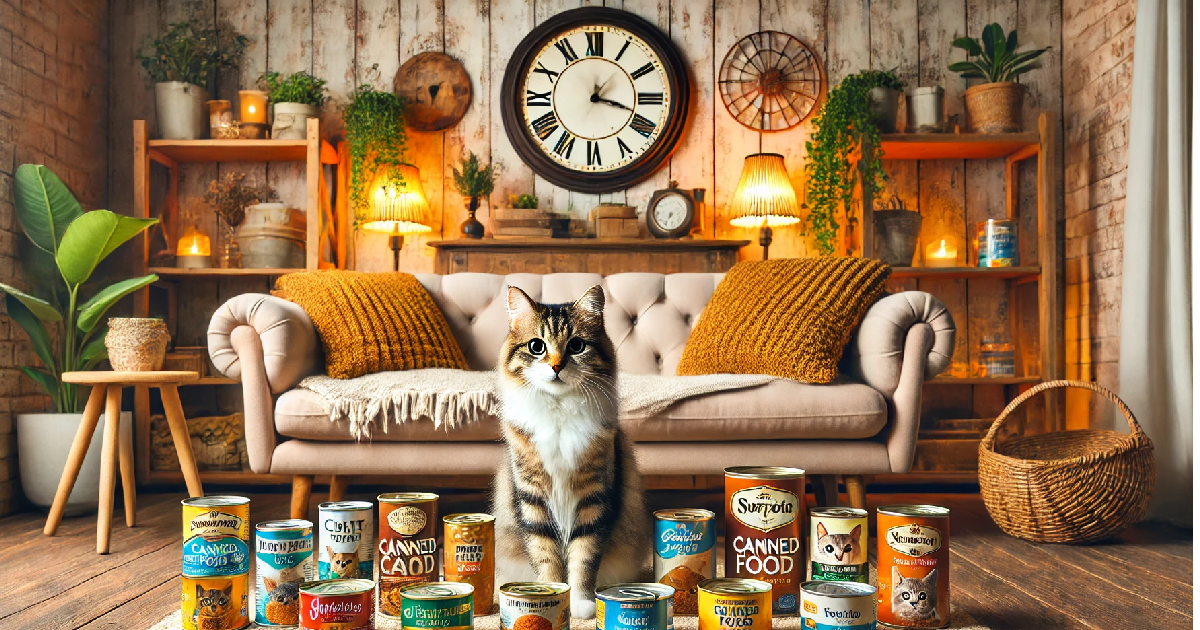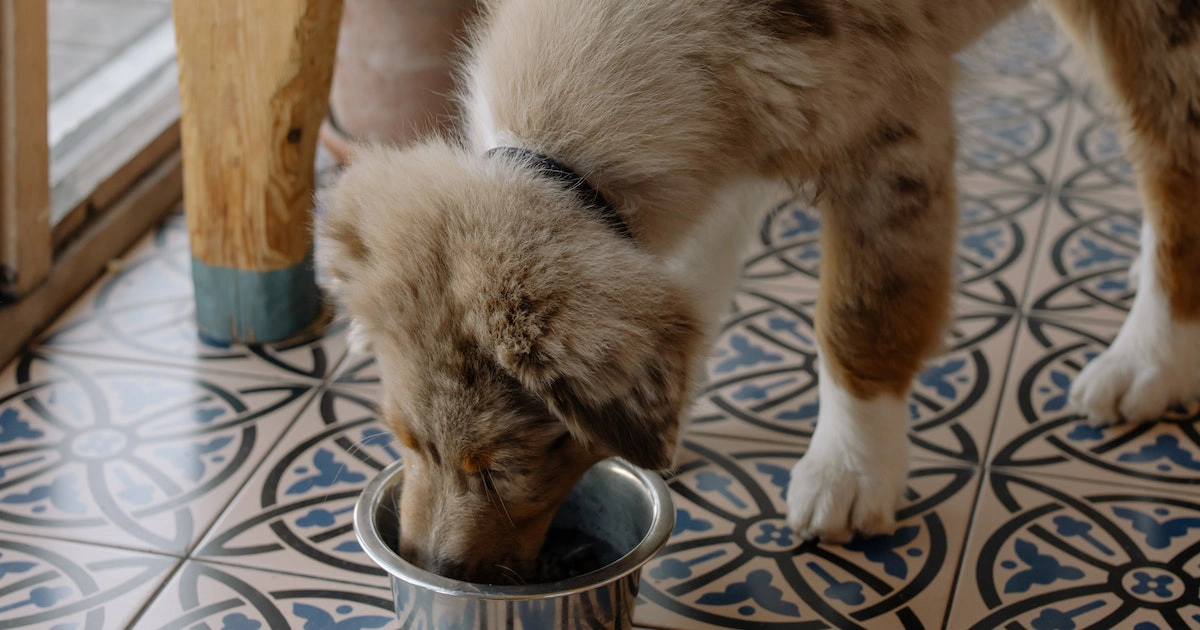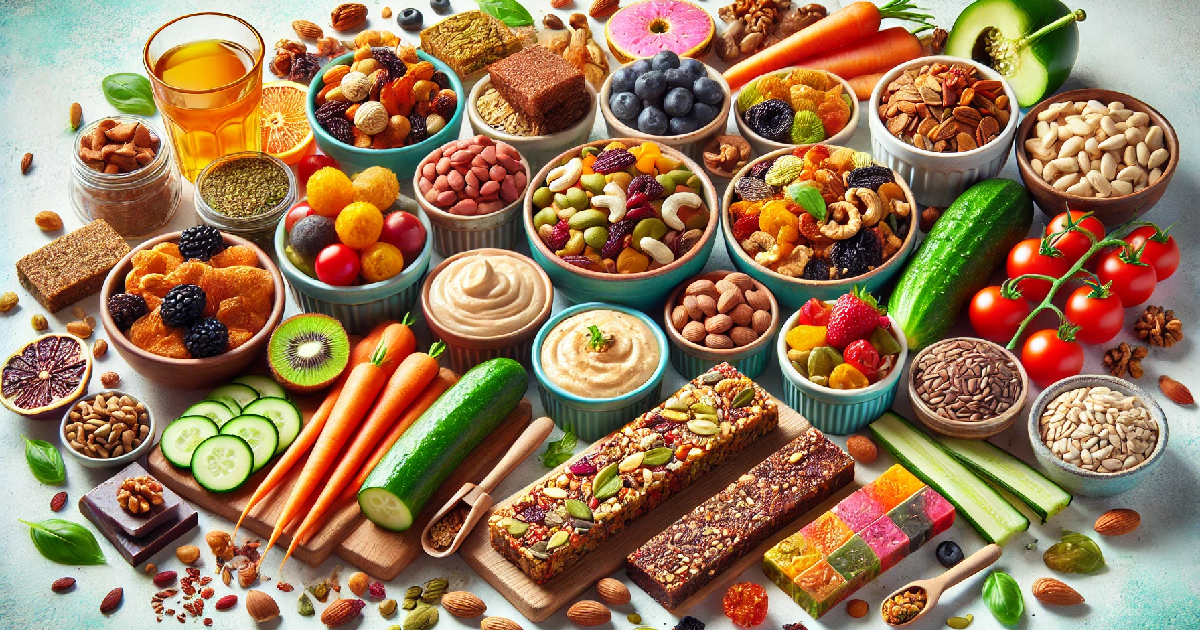Making homemade dog food is an excellent way to ensure your pet friend gets the nutrients they need to stay healthy and happy. However, it can be demanding to determine how much homemade dog food to feed them. Unlike commercial dog food, which comes with feeding guidelines on the packaging, you’re left guessing when it comes to homemade meals.
Feeding your four-legged companion too little or too much homemade dog food can impact their health in several ways. It’s vital to understand the factors that affect how much of this diet is appropriate for your pet’s size, age, activity level, and overall health status.
Some Conditions To Consider When Determining The Appropriate Portion Sizes For Homemade Dog Food
Consult Your Veterinarian:
Before embarking on a homemade dog food diet, it is essential to consult your veterinarian. Every dog has unique dietary requirements based on breed, age, weight, activity level, and any underlying health conditions. Your vet will help you create a personalized feeding plan that meets your dog’s specific needs, ensuring they receive the appropriate amount of homemade food.
Calculate The Daily Caloric Requirements:
To determine the right portion sizes for homemade dog food, you need to calculate your dog’s daily caloric requirements. This calculation typically considers factors like age, weight, activity level, and metabolism. Your veterinarian can help you with this calculation to ensure accuracy.
The 90-10 Rule:
A general guideline for homemade dog food is the 90-10 rule. This means 90% of your dog’s diet should consist of lean protein sources like poultry, beef, fish, or turkey. The remaining 10% of your diet should consist of carbohydrates (like rice or sweet potatoes), fruits, vegetables, and healthful fats (like fish oil).
Monitor Body Condition:
Regularly monitoring your dog’s body condition is crucial in determining the appropriate portion sizes. A healthy weight range varies among breeds; visual cues can help you assess your dog’s condition. Ideally, you should be able to observe your dog’s ribcage without excessive fat covering, and when viewed from above, there should be a visible waist. Adjust the portion sizes accordingly if your dog’s weight is increasing or decreasing.
Gradual Transition and Adjustments:
When transitioning to homemade dog food, it’s essential to make gradual changes to prevent digestive upsets. Mix a small portion of homemade food with your dog’s diet, gradually increasing the proportion over a week or two. After fully transitioning, monitor your dog’s digestion, energy levels, coat condition, and overall well-being. If any issues arise, consult your vet and make necessary adjustments to portion sizes or ingredients.
Consistency and Variety:
Consistency is essential when it comes to feeding homemade dog food. Maintaining a regular feeding schedule and portion sizes will help balance your dog’s digestive system. Additionally, it’s important to provide variety within the framework of a balanced diet. Introduce different protein sources and rotate carbohydrates and vegetables to ensure your dog receives a wide range of essential nutrients.
How Many Cups Of Homemade Dog Food Should I Feed?
The amount of homemade dog food to feed your furry friend depends on various factors such as their weight, age, activity level, health conditions and the recipe being used. Generally, canines should consume between 2 and 4 % of their body weight per day. This means that a 50-pound dog should consume between 1 and 1.5 pounds of food daily, or approximately 2 to 3 containers.
You should always consult a veterinarian or canine nutritionist for specific feeding recommendations based on your dog’s requirements. Additionally, you may need to adjust the quantity of homemade dog food based on your dog’s weight or general health.
Ultimately, providing your furry friend with a balanced diet that meets their nutritional needs is crucial for their well-being and longevity. With proper research and professional guidance, creating a delicious and healthy homemade dog food recipe tailored specifically for your pup is possible!
Homemade Dog Food
Regarding feeding your furry friend homemade dog food, serving size is a crucial factor to consider. The amount you should serve your dog varies depending on weight, activity level, and overall health condition. The recommended serving size for homemade dog food is around 1-2 cups per day for senior dogs. However, this may fluctuate based on individual needs.
Suppose your dog has specific dietary or health concerns requiring a tailored diet plan. In that case, it’s essential to consult with a veterinarian or canine nutritionist before making significant changes in their diet. Serving portions may need to be adjusted for special requirements, such as obesity or other medical conditions.
It’s important not to overfeed your dog but also to ensure they’re getting enough nutrients from their meals. Excessive feeding can lead to obesity and other health problems down the line, while underfeeding can cause malnutrition and affect their overall well-being. Keeping track of how much you’re feeding them each day will help maintain healthy eating habits and avoid any potential issues from arising in the future.
How Much Homemade Food To Feed Dog
Regarding providing your furry pal homemade dog food, It is essential when feeding your furry friend homemade dog food to ensure that they receive the appropriate amount of nutrients. The amount of sustenance a dog should consume daily depends on their weight, age, and level of activity. Generally, canines should consume 2% to 3% of their body weight daily. Therefore, a dog weighing 50 pounds should consume approximately 1-1.5 pounds of food per day.
This is merely a recommendation, and you may require to adjust the amount based on your dog’s specific requirements. In addition to consulting a veterinarian or canine nutritionist for guidance on how much homemade dog food to feed your companion, seeking advice from a nutritionist can be useful.
In addition to considering the appropriate portion size for your dog, also important to make sure that they are getting a healthy diet that includes all necessary nutrients such as protein, fat, carbohydrates, vitamins and minerals. With proper planning and guidance from professionals or reliable sources online, you can create healthy homemade meals for your furry pal without any worry about how much homemade dog food should be served daily!
What Daily Amount Of Homemade Dog Food Should A Dog Eat?
When providing your dog with homemade dog food daily, it is essential to meet its nutritional requirements. This entails supplying a balanced diet of protein, fat, carbohydrates, and essential vitamins and minerals. Homemade dog food is advised to contain at most 50% of your pet’s daily diet.
To determine the appropriate amount of homemade dog food to feed your pet, you should consult with a veterinarian or canine nutrition specialist. They can help you calculate the right ratios of nutrients based on your dog’s age, weight, breed, activity level and any health issues they may have.
It is also important to gradually transition your dog onto a new diet by introducing small amounts at first and monitoring their reaction. You should adjust the recipe or consult a professional if you observe adverse effects such as diarrhoea or vomiting. Ultimately, if done correctly, feeding your dog homemade dog food daily can be healthy and enjoyable for them!
Can I Feed My Dog Homemade Dog Food Every Day?
The homemade dog food you give your pet provides them with a well-rounded diet whenever you give them human food. Homemade dog food should contain all the necessary nutrients, such as protein, carbohydrates, fats, vitamins and minerals, in the right proportions to meet your dog’s daily nutritional requirements. Before you start cooking meals at home for your four-legged pal, it is strongly suggested that you consult with a canine nutritionist or a veterinarian for guidance first.
The quantity of home-cooked dog food appropriate for your canine companion is determined by age, weight, degree of activity, and general state of health. Puppies have a higher caloric requirement than adult dogs, and they may need to consume smaller meals more frequently throughout the day. Adult canines can be fed once or twice daily, depending on the requirements of the individual animal. Consuming an excessive amount of food can result in obesity, which is associated with a number of adverse health effects, including joint discomfort and heart disease.
In conclusion, feeding your dog homemade dog food every day is possible but requires careful planning and preparation to ensure they get all the essential nutrients in the right amounts. Before making any significant alterations to the nutrition of your pet, it is strongly recommended that you get the advice of a professional. Additionally, you should routinely check your pet’s weight to avoid them from becoming overweight.
Can Dogs Eat Rice And Veggies Every Day?

If you are considering feeding your dog rice and veggies every day, it is important to keep in mind that dogs require a balanced diet that includes protein, fat, and carbohydrates. While rice and vegetables can be nutritious components of a dog’s diet, they should not make up the entirety of their meals. Dogs also need sources of animal-based proteins such as chicken, beef or fish.
When making homemade dog food that includes rice and veggies, it is crucial to consult with a veterinarian or canine nutrition expert to ensure that the meal provides all the necessary nutrients for your pup. They can recommend appropriate portion sizes based on your dog’s age, size and activity level.
Furthermore, incorporating variety into your dog’s diet is essential for their health. You can add different types of vegetables, such as sweet potatoes or broccoli, to provide additional vitamins and minerals. Providing a balanced diet with different ingredients in appropriate portions ensures your furry friend receives all the nutrients they need to thrive.
Is Homemade Dog Food Enough Nutrition?
One of the most important considerations when feeding your dog homemade food is how much to give them. Compared to commercial dog food, which comes with specific serving sizes and feeding instructions, it can be tough to determine the correct amount of homemade food for your furry friend. It is essential to determine the optimum calorie intake for your dog, which will vary depending on their age, weight, amount of activity, and general state of health.
If you plan on making homemade meals for your pup, ensure they are getting all the necessary nutrients in their diet. Dogs need a balanced diet with protein, carbohydrates, fats, vitamins and minerals. Homemade diets can be nutritionally complete but require careful planning and attention to detail. You should consult with a veterinary nutritionist or do your own research before creating a homemade meal plan for your pet.
Can A Dog Live On Homemade Dog Food?
The amount given depends on various factors when it comes to feeding dogs homemade food. These include the dog’s weight, activity level, and age. Typically, dogs require around 2-3% of their body weight in food daily. For instance, a 50-pound dog would need approximately one pound of food daily.
But it is vital to remember that homemade dog food has more nutrients than store-bought food. Therefore, owners should feed less of it to avoid overfeeding their furry friends. Additionally, a veterinarian can help assess how much homemade food is appropriate for specific dogs based on their nutritional needs and health status.
Even though a dog can live on home-cooked food alone if it’s done right and with the help of a vet, figuring out the right amount will depend on many things, like the breed’s size or any health problems that were there before. Before making big changes to your pet’s food, you should think about this.
Which Is Better, Dog Food Or Homemade?
When it comes to deciding between dog food and homemade food, one of the main concerns is how much to feed your furry friend. While commercial dog food provides feeding instructions on its packaging, owners must determine the appropriate amount of homemade food based on their pet’s age, weight, and activity level. Balanced diets are essential with adequate protein, carbohydrates, fats, vitamins, and minerals.
Another important factor when feeding homemade dog food is avoiding ingredients that can be toxic or harmful to dogs. For instance, some foods like onions and garlic are poisonous for dogs and should not be included in their meals. Additionally, while some human foods like lean meats and vegetables may be healthy for dogs in moderation, others like chocolate and grapes can cause severe health issues.
What Vitamins Should I Add To My Homemade Dog Food?

Make sure your dog gets enough vitamins and minerals while making homemade dog food. Some of the key vitamins to add include vitamin A, B-complex vitamins, vitamin C, vitamin D, vitamin E, and vitamin K. These can be found in various types of foods such as leafy greens for vitamin A and K or liver for B-complex vitamins.
However, it’s important to note that adding too much of certain vitamins can also be harmful to your dog’s health. For example, too much vitamin A can lead to bone problems, and excessive amounts of vitamin D can cause kidney issues. A veterinarian or animal nutritionist can help you evaluate your dog’s nutrient needs depending on age, size, and health.
Is 1 Cup Of Dog Food Enough?
One Cup Of Dog Food Might Be Sufficient For Some Canines But Not Others. How Much Food Your Dog Needs Is Determined By Their Breed, Size, Age, And Level Of Activity.
You Should Consult With A Veterinarian Or Canine Nutritionist To Determine How Much Homemade Dog Food To Feed Your Furry Friend. They Can Calculate Your Dog’s Appropriate Caloric Intake And Help You Create A Balanced Diet Plan.
Additionally, Monitoring Your Dog’s Weight And Modifying Their Portion Sizes Is Essential. Overfeeding Can Result In Obesity And Health Issues, While Underfeeding Can Lead To Malnutrition And Fatigue. Consult A Specialist Before Making Major Dietary Changes To Your Pet.
Do Dogs Need Salt In Homemade Food?
Giving dogs a balanced, nutrient-rich diet is crucial while making their own food. Salting a dog’s food is a typical question. Dogs require sodium, but too much might hurt them.
Generally, the amount of salt applied to homemade dog food recipes should be limited. Dogs only need about 0.25 grams of sodium daily per pound of body weight, meaning a 50-pound dog needs only around 12.5 grams daily. It’s best to avoid adding any additional table salt and instead rely on natural sources like meat and vegetables for flavour.
When determining how much homemade dog food to feed your furry friend, it’s important to consider factors such as age, activity level, and overall health. Generally, adult dogs should be fed twice a day with portion sizes ranging from one-half cup to two cups, depending on size and activity level. Puppies may require frequent feeding and smaller daily portions as they grow and develop. Consultation with a veterinarian can help determine the appropriate amount for your pet’s needs.
Are Potatoes Healthy For Dogs?
Potatoes are a source of carbohydrates for dogs. Potatoes contain vitamins and minerals like vitamin C, potassium, iron, and copper. But potatoes should not be the only food given to your dog as they do not give all the necessary nutrients needed for a balanced diet.
When including potatoes in homemade dog food, it is recommended to feed them in moderation. A decent general rule is to feed a medium-sized dog that weighs about 50 pounds one to two small boiled or baked potatoes daily. Potatoes can make you fat and cause other health problems, like diabetes if you eat too many of them.
Also, it’s important to know that giving a dog raw or unripe potatoes can be dangerous because they contain solanine, which can cause stomach problems, sickness, diarrhoea, and in the worst cases, even death. Always make sure that any potato fed to your furry friend is cooked thoroughly before serving it up!
Conclusion
How much homemade dog food to give your pet varies on a lot of different things. When finding out how much to feed your dog, its size and weight are two of the most important factors. Less food will be needed for a smaller dog than for a bigger one.
It is also important to remember that it may not provide all the necessary nutrients for optimal health. Therefore, it is strongly recommended to consult with a veterinarian or animal nutritionist before completely switching to a homemade diet.
Monitoring your pet’s weight regularly and adjusting their portion sizes accordingly is crucial. Excessive feeding can lead to obesity and other health issues in dogs.

























